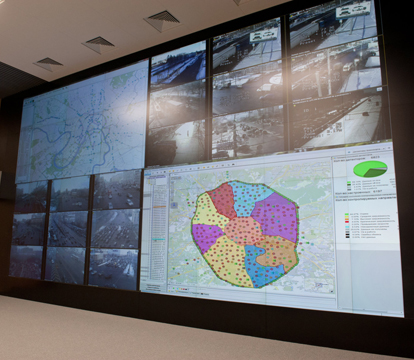David Griffiths, Director, Market Development EMEA at Christie, writes of a new era dawning of data management for distributed control rooms.
Data distribution is complex and continues to evolve with the growing demands of control rooms. This is particularly a concern with control rooms that have teams working together across more than one location – within the same or different buildings, locally or across vast geographies. Not only is it a challenge to collect and manage the myriad sources, but it’s also challenging to share data between sites to collaborate around the information. How can a control room take data that originates in multiple formats, from multiple sources, and make it available – easily, efficiently and in a manageable format – to operators distributed across many locations? In this brief, we will outline how AV sources, signals and network sources are changing and how systems need to adapt. We will also look at how a control room can be designed with scalability and secure data distribution in mind, while ensuring ease of use for the system operators.
Collecting and controlling
Data originates in many formats. It may be supplied directly over a cable using a continuous signal or accessed across a network using various application protocols. Recently, the demand has grown to not only view multimedia and network sources easily, but also to manage the content on display using a keyboard and mouse. The following content sources are frequently used and need to be considered when determining a control room’s requirements for distributing, controlling and presenting the data.
Audiovisual sources
Video is a common data source, and audio can also be helpful for operators. The resolution of these audiovisual sources has increased with the introduction of 4K or ultra-high-definition (UHD) video. This has changed the requirement to accept source content in resolutions as high as 3840 x 2160 for presentation on control room displays.
Network sources
Software desktop capture tools offer an economical method for transporting and controlling low-motion data/graphic sources over a pre-existing network. Common screen capture protocols are available in open source applications, networked software applications and popular operating systems. They also support control of the source machine using a keyboard and mouse. Use of IP cameras has also proliferated in many applications, particularly security and surveillance. The H.264 compression standard is ubiquitous in IP cameras, AV encoders and IPTV systems. Video processors must be able to adapt to the use of common protocols and unicast or multicast delivery platforms. A system called on to decode IP cameras must also be capable of efficiently interfacing with, and selecting from, possibly thousands of cameras.
In addition to the types of sources involved, system design is impacted by concerns for scalability, security, integration and ease of use. Organisations that manage high-value processes, critical assets or public safety functions may distribute data to multiple departments, collaborating between rooms, buildings on a campus or across a vast geography in real-time. It may also be necessary to present shared data on one or many video walls that support different organizational functions or in digital signage awareness displays that may be distributed across a facility.
IP networks represent an attractive platform for distributing AV data sources within control room operations. Networks reach everywhere in an organization, but segments of the network may be protected by firewalls, security appliances or restricted to use of unicast transport, rather than multicast which is popular for distribution applications. A system that transports real-time video and audio over a network must offer scalability in transporting content to many endpoint displays and operators, as well as extending content across segments that have more sophisticated transport restrictions such as encryption or unicast-only transport.
In meeting the specifications for a flexible, scalable, secure, integrated and easy-to-use control room system that will support a distributed operation, it is important to keep in mind that the system may require:
• Compatibility with multiple video, audio and control formats
• Capacity to interface with network-based application servers or desktop capture applications
• The ability to expand over time or to manage more sources and displays, or deliver data to new locations
• An efficient method to distribute the content to displays and locations
• An easy-to-use configuration and control interface
Visit https://www.christiedigital.com/emea/video-walls/video-wall-solutions/video-wall-controllers.









